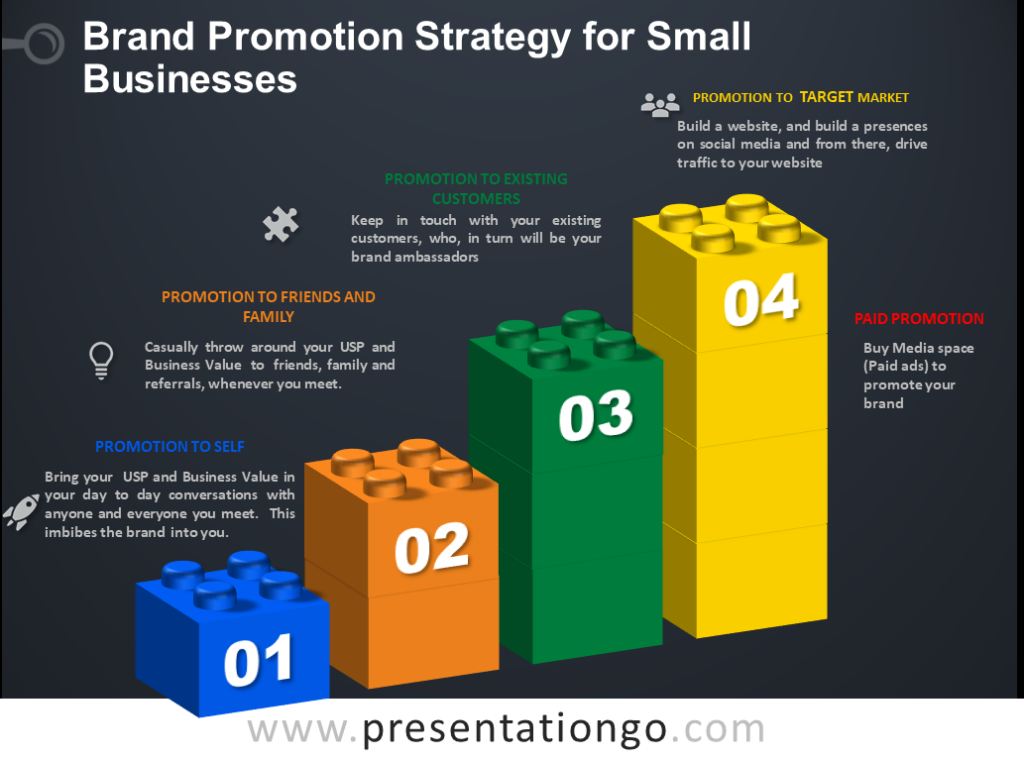How to Brand Your Small Business
Branding – A Confusing Term
Have you noticed that the term “branding” gets mentioned around a lot, and also in different contexts? Though the idea of branding makes perfect sense, it is not often clear on HOW EXACTLY to go about it.
This article goes step by step in how a small business should build their brand. This article also includes a case study that serves as a branding exercise that you will find useful. Keep reading.
Expanding Your Business When Starting from Scratch
Usually, small business owners start out by approaching their friends and family to try out their products and services. Approaching your closest level contacts for work makes it easier to get started when nobody knows you.
Once you deliver 2-3 such orders with minimal to no profit, you slowly start to build a level of credibility for yourself. The next phase of your business would be in asking these satisfied customers to refer your services to their acquaintances. In other words – referral business.
Hitting a Roadblock
The problem starts when you want to expand further. I mean, you have only so many close contacts and so many referrals. You see, so far, you could convert based on either your personal relationship, or by leveraging the personal relationship of your personal relationships. But this has a limitation.
Overcoming the Trust Barrier
When you start reaching out to prospective customers that are not in your circle, you realize that they wouldn’t normally buy from you. But that’s not because they don’t like what you are offering. Nor is it because there is some problem in your offering or your price point. It’s just that they don’t know you enough to trust you. If you really get to thinking, why would they buy from you?
Introducing Branding

So, how would you solve this problem? That’s where branding comes into the picture. When it is difficult for people to know you well, make it possible for them to know your business. Help them in creating a flavor of business in the tongue of their mind. Create a nice visual of your business in the eyes of their mind.
What is Branding
Branding is creating a positive image of your business in the mind of your prospective customers so that they begin to trust you enough to buy from you. The prerequisite, of course, is that your offer satisfies the needs of the prospect, and that your offerings are at a fair price point to the value you provide.
The Two Questions that Lead you to Your Brand
I know you might be asking – All this is so great, but how exactly do I start branding my business? Well, start off by asking yourselves these two questions, and then jot down their answers in a notebook.
Question 1: Why would a stranger want to buy my product or my services, when there are so many like me offering that service or product?
Question 2: What exactly are the needs of my prospect that I satisfy with my products or service?
Grab a notebook, and jot down the answers to these questions (Preferably do this exercise with pen and paper, and not typing on a desktop or a mobile)
Question 1 – The USP
As you start to think about this question deeply, you are ascertaining what is unique about your offering. What’s in your offering that no one has but only you do? What is then the gap in the market that you would be addressing as a result? Scribble away in your notebook.
Question 2 – The Business Value
Question 2 boils down to the list of customer needs that you satisfy. A word of caution here – Don’t write down the features of your product or service. Write down the value that your client gets.
The Brand Equation
Your Brand = Answer to Question 1 + Answer to Question 2.
In other words:
Your Brand = Your USP + The Business Value that you provide
Discovering Your Brand –Case Study of an Event Planner
Let’s say you are an event planner company. You take the responsibility for not just the event per se, but also the pre-event and post-event activities. Activities like sending out invitations before the event and social media management after the event.
So your USP is – We take the end-to-end responsibility of your event, including pre-event and post-event activities.
Getting to the answer to Question 2 – Your list of services could be:
- Wedding Event Management
- Corporate Event Management
- Family Event Management
Ok, so we got the USP, and we got a bulleted list of the business value you provide to your prospective customers.
Brand Promotion Strategy for Small Businesses
Your Brand Promotion strategy is 4 simple steps:

1. Promote your Brand to Yourself
You cannot promote your brand to others if you haven’t imbibed it first.
Start bringing your brand (i.e. USP + Business Value) into your day-to-day conversations. Bring this on whenever and wherever you can in your day-to-day life. Speak out your brand to your friends, family, extended family, and whomsoever that you talk to.
Another place this will come in handy is during situations where you have to introduce yourself. Introduce yourself as your brand. For example, your introduction line could be something like :
Hi, My name is John. I am an event planner. We do Weddings, Corporate and Family Events. We make your event run smoothly, taking end-to-end responsibility including pre and post-event activities.
In situations where this sounds too wordy for a conversational line, you could trim out the business value depending upon the person you are meeting. In other words, you can choose one amongst Weddings, Corporates, and Family Events, dropping out the other 2.
2. Promote your Brand to Your Friends and Family
In a friend and family set up, you could casually throw around your USP + Business Value in the context of an incident that you are sharing. Learn to stuff your USP + Business Value in day-to-day conversations until they become second nature to you.
3. Promote your Brand to your Existing Customers
It is crucial to keep in touch with your existing customers. Many of these are happy with the services they got from you. They will happily refer you to their contacts and network. In the course of a normal conversation, activate the branding that you have so well practiced with your friends and family previously.
4. Promote your Brand Digitally to Your Target Market
Build a website for your business. Make sure that the website, amongst other things, brings out your brand. Identify 2-3 social media networks that you can commit to being active on. Ideally, Twitter, Instagram, and LinkedIn are good choices.
Keep posting consistently on social media platforms and from here, start to drive traffic to your company website. The posts should highlight your work and bring out your brand. By this time, you will naturally be good at communicating your brand here having done so to your friends, family, referrals, and strangers. So by now, this should flow normally out from you.
But there is a crucial difference. Digital media has a strong visual component that your conversations don’t. So keep that in mind. Have a logo put up on your website and your social media pages. Keep the font type, text color, and foreground and background colors as consistent as possible.
Promoting your brand digitally is an involved topic and deserves an article of its own. But this is a great starting point
Concluding Remarks
This blog article talked about branding. I have deliberately kept it simple and relatable. I believe that’s how branding should be built over a period of time.
Ascertain your USP and your Business Value. Once done, ripple out – from family, and friends, to existing customers to strangers, and lastly to your digital assets.
Always keep the endgame in mind. You are building a brand to get people to trust you and your business. So, let your brand reflect, in a simple manner, who you are, what you do, and what they are going to get from you. That’s all that is there to it, so don’t complicate it any beyond that.
